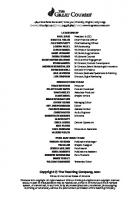Think Like a Grandmaster
299 45 3MB
English Pages [186] Year 1995
Table of contents :
Cover
Title page
Symbols
Preface
Introduction: An Unusual Experiment
1 Analysis of Variations
Do you Know how to Analyse?
Historical Digression
The Tree of Analysis
Forced and Unforced Variations
Different Types of Tree
Bare Trunk
A 'Coppice'
'Thickets of Variations'
Selection of Candidate Moves
What is a Candidate Move?
'Creeping Moves'
Gross Blunders
Dizziness due to Success
Conditioned Reflexes
The Blind Spot
Through the Eyes of a Patzer - Blumenfeld's Rule
More Practical Advice
To Analyse or Not to Analyse?
Positions for Analysis or Judgement
Trust your Opponent or Not?
Time-trouble
Exercises
2 Positional Judgement
Open Lines and Diagonals
Modern Ideas on Open Lines
Pawn Structure and Weak Squares
Weak Squares
Passed Pawns
Pawn Islands
Weak Colour Complexes
The Position of the Pieces
Poor Position of a Number of Pieces
Space and the Centre
Exercises
An Experiment Continued
Imitate Botvinnik or Najdorf?
What is Concrete and What is General?
General Questions and Preparation
The Opening
Middlegame
The Ending
General Formulae and Concrete Analysis
3 Planning
A Single Plan
Planlessness Punished
Be Flexible
The Centre
Closed Centre
Open Centre
Mobile Centre
Fixed Centre
Tension in the Centre
Exercises
4 The Ending
5 A Player's Knowledge
Opening Study
Is it Possible to Study the MiddIegame?
Adjourned Games
Advice on Various Questions
Chess and Life
The Factors of Success
Know Your Opponent
Know Thyself!
Solutions to the Exercises
Index of Names
Cover
Title page
Symbols
Preface
Introduction: An Unusual Experiment
1 Analysis of Variations
Do you Know how to Analyse?
Historical Digression
The Tree of Analysis
Forced and Unforced Variations
Different Types of Tree
Bare Trunk
A 'Coppice'
'Thickets of Variations'
Selection of Candidate Moves
What is a Candidate Move?
'Creeping Moves'
Gross Blunders
Dizziness due to Success
Conditioned Reflexes
The Blind Spot
Through the Eyes of a Patzer - Blumenfeld's Rule
More Practical Advice
To Analyse or Not to Analyse?
Positions for Analysis or Judgement
Trust your Opponent or Not?
Time-trouble
Exercises
2 Positional Judgement
Open Lines and Diagonals
Modern Ideas on Open Lines
Pawn Structure and Weak Squares
Weak Squares
Passed Pawns
Pawn Islands
Weak Colour Complexes
The Position of the Pieces
Poor Position of a Number of Pieces
Space and the Centre
Exercises
An Experiment Continued
Imitate Botvinnik or Najdorf?
What is Concrete and What is General?
General Questions and Preparation
The Opening
Middlegame
The Ending
General Formulae and Concrete Analysis
3 Planning
A Single Plan
Planlessness Punished
Be Flexible
The Centre
Closed Centre
Open Centre
Mobile Centre
Fixed Centre
Tension in the Centre
Exercises
4 The Ending
5 A Player's Knowledge
Opening Study
Is it Possible to Study the MiddIegame?
Adjourned Games
Advice on Various Questions
Chess and Life
The Factors of Success
Know Your Opponent
Know Thyself!
Solutions to the Exercises
Index of Names










